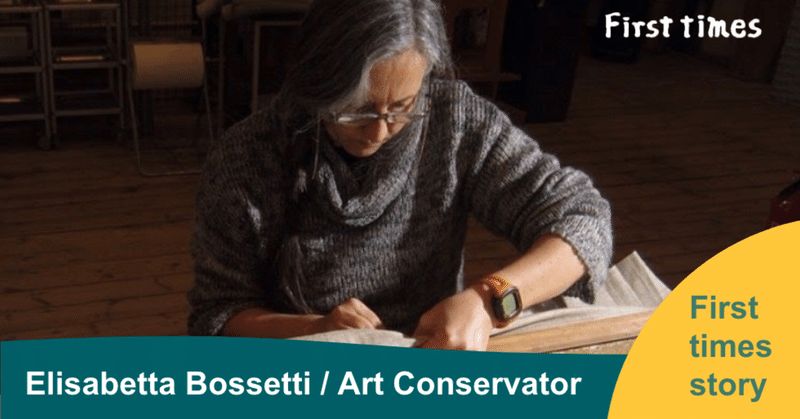
In close contact with art: Elisabetta’s first time
Have you ever encountered an artwork that kept you captivated after leaving the museum? The first guest for our interview project, "First times story," in which we ask various experts to look back on their first experience, is someone that makes such an encounter possible for us. Elisabetta, an art conservator with 30 years of experience, shares her story about her first foray into the world of conservation - a ‘visionary’ experience in her childhood and the pursuit of her dream since then.
Growing up with paintings
I genuinely enjoyed watching paintings as a child. Raised in a town with rich accessibility to churches and museums, I grew up closely with art works. Although it was not for religious reasons, I often went to a church alone just to look at the paintings that adorned the walls and the ceiling.
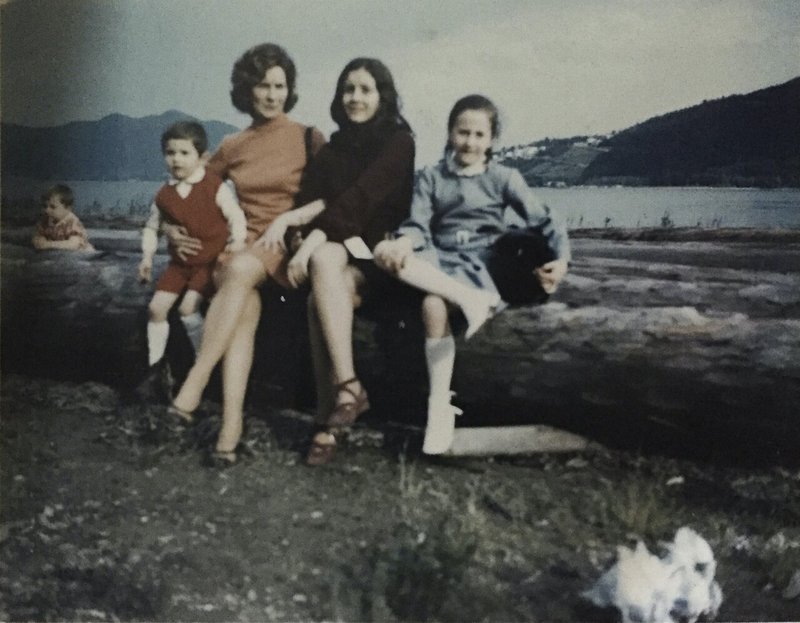
I didn’t really understand what the paintings were really about. But I just enjoyed the stories each piece was able to tell and I immersed myself in the depicted world. It was like a meditation. I remember feeling relaxed as I attentively looked at the colors, textures and the subjects’ expressions.
A visionary encounter in Bologna
When I was 13, I visited the cathedral of Bologna on a school trip. Inside were two young women, high up on a scaffold, restoring a fresco painting. I was instantly riveted by the sight - they were working extremely close to the art piece!

My relationship to art, just like many other viewers, had always assumed a distance, imposed by a partition, a display case or a common sense of “Don’t touch it!”. But these women were allowed to touch the work. It felt to me like an utmost privileged act. I thought, “Wow, they are now in the closest place to God than anyone else on Earth!” And this is when I knew what I wanted to be in the future.
After finishing high school, I applied to ENAIP, the conservation school in Botticino without success. The school required a high level of manual skills from the candidates, which I did not have enough at that time. I instead started working as a trainee in different conservation studios to gain practical experiences. Five years have passed, and I was finally admitted to ENAIP.
During the traineeship period, At the age of 21, I worked in a fresco restoration as an assistant in a church, located in a small town in the Brescia mountains. Running down the brush on the painting aloft, I realized I was in the same place as the women that captivated me eight years ago. I was in my early twenties - around the same age as them at the time, and the painting I was working on was from a similar historical period as the one they did. I felt a tingling sensation with excitement.
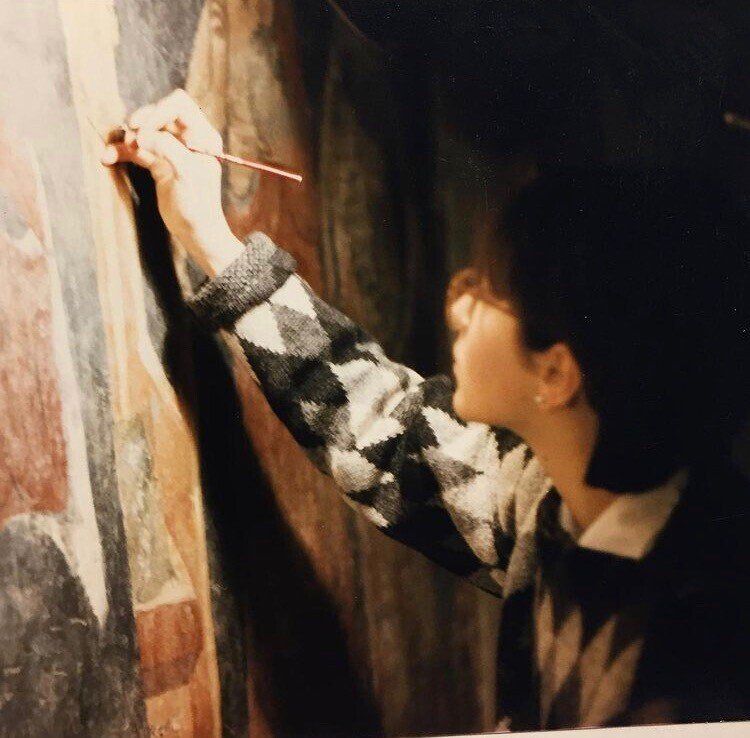
In between the artist and history
My first major restoration project was a ceiling fresco by Correggio in San Giovanni Evangelista, Parma. This was a part of the ENAIP curriculum. We were all given specific parts to work on, and I was in charge of angels and legs in the central circle. Filled with excitement and a sense of responsibility, I gave everything I could to the assigned parts. The project was behind schedule, which meant a hard work condition. Over the course of two months, we worked ten hours a day on the high scaffold.
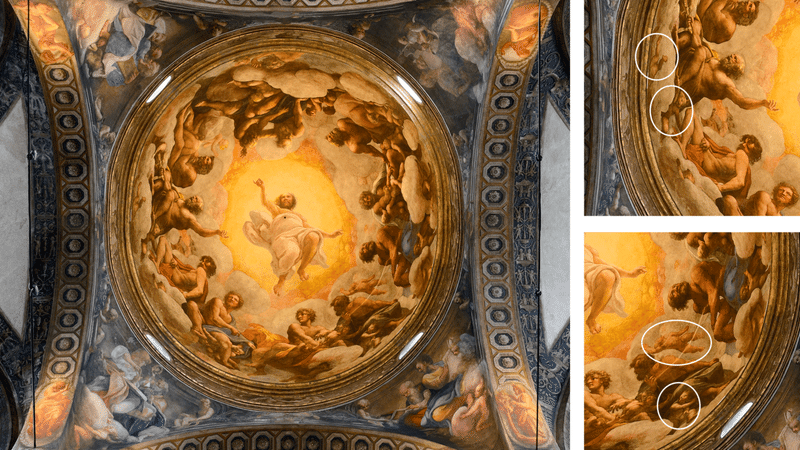
↑R: The ceiling fresco by Correggio / L: Circles indicate the parts Elisabetta restored
It was through this project that I learned one of the principle roles as a conservator - “revitalizing” the work within the historical context. I encountered a major damage in the part I was restoring. An intuitive reaction would be to restore the damage completely, for the main point of conservation is to keep the integrity of the work to prevent it from losing its artistic value. But the method I learned from the chief was a special retouching technique to reintegrate the painting while also retaining the historical loss.
I learned that our respect to the artist’s intention and the passing of time must go hand in hand. In this sense, working as a conservator means intervening, while trying not to impose one's aesthetic judgments or preferences to the piece of art. The restoration task is complete, when the retouched part is no longer noticeable to the viewer.
What art conservation means to me
My primal motivation for my work remains the same since the age of 13. Conserving art is, most and foremost, a very privileged act, where I get to intimately engage with each piece. It’s an irresistible feeling, and this is what keeps me going as a conservator.
Through years of experience, I have realized beauty of my work even more. For one, conserving an artwork means you’re weaving through people’s emotions and thoughts. There is the artist’s creative urge, the curator’s passion and the viewer’s wonder. This is true to any artwork, regardless of the artistic importance or the owner, and the fact that I help linking these various emotional values is priceless.
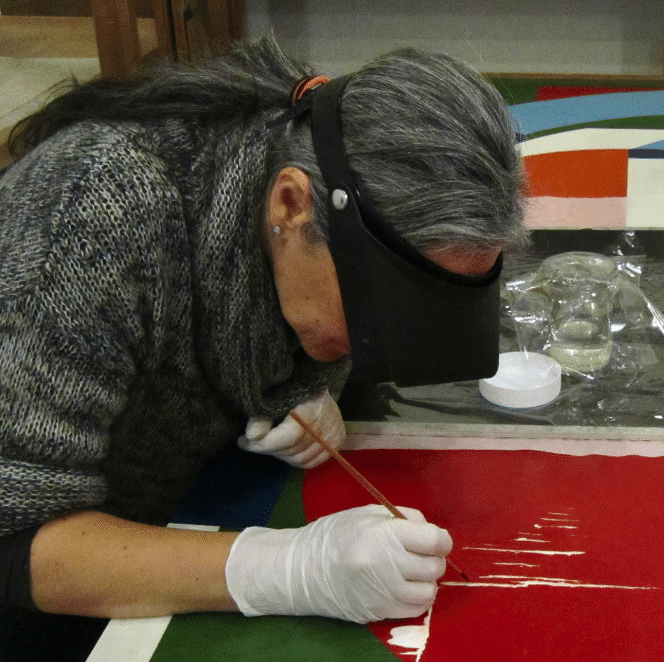
I also think that conserving art also means to pass hope to the next generation. Art is essential for humans, as a space for free expression, as a source of inspiration and as a ground that nurtures our mind. I hope that my work contributes to preparing such a platform for the future.
It also means for me to stay curious about the ever-changing world of art. After graduating from ENAIP, I moved to Denmark, driven by the urge for new experiences. I was entirely impressed by the predominantly nontraditional approach in Denmark, which was in contrast to the long-established methodology in Italy with much emphasis on the rules and traditions. Danish conservation involved more modern and contemporary artworks, and used materials and methods that I was not familiar with. As I worked with art pieces from various historical periods and genres, I have come to realize the importance of respect for the tradition as well as continuous effort to learn more from the new artistic scenes.

Authors’ note:
As we talked with Elisabetta via Zoom, we felt her sincerity to her passion (she is still driven by the same sensation since she was 13!) as well as her deeply loving and respectful attitude to the world. We found ourselves riveted by her, just like she was by the two women in the cathedral in Bologna.
by Yuki & Megumi
この記事が気に入ったらサポートをしてみませんか?
